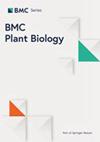Planting pattern and nitrogen management strategies: positive effect on yield and quality attributes of Triticum aestivum L. crop
IF 4.3
2区 生物学
Q1 PLANT SCIENCES
引用次数: 0
Abstract
Wheat (Triticum aestivum L.) is a staple food crop that plays a crucial role in global food security. A suitable planting pattern and optimum nitrogen (N) split management are efficient practices for improving wheat production. Therefore, an experiment was performed to explore the effect of N split management and sowing patterns on wheat at the Agronomy Research Farm, The University of Agriculture Peshawar, during rabi season 2020-21 and 2021-22. The treatments consisted of different nitrogen rates of 0, 80, 120, and 160 kg ha− 1 and planting patterns of W, M, broadcast and line sowing. The pooled analysis of both cropping seasons showed that application of 120 kg N ha− 1 increased spikelets spike− 1, grains spike− 1, 1000 grains weight, grain yield, grain N content, evapotranspiration and water use efficiency by 21.9, 16.7, 21.8, 70, 13, 19.9 and 40% as compared to control, respectively. In addition, W and M were observed the best management practices among all planting patterns. The M planting pattern enhanced chlorophyll a, b, carotenoids and evapotranspiration while W plating pattern improved yield components and yield of wheat as compared to broadcast planting patterns. The principal component analysis biplot showed a close association of M and W planting patterns with 120 kg N ha− 1 in most of the studied traits. Hence, it is concluded that split application of 120 kg N ha− 1 in W and M sowing patterns enhanced growth, biochemical traits and water use efficiency, reducing N fertilization from 160 to 120 kg ha− 1 while increasing grain yield of wheat. Hence, it is recommended that application of 120 kg N ha⁻¹ in combination with W and M planting patterns offer a sustainable approach to enhancing wheat production in the alkaline soil conditions of the Peshawar valley.种植模式和氮管理策略:对小麦产量和质量属性的积极影响
小麦(Triticum aestivum L.)是一种主食作物,在全球粮食安全中发挥着至关重要的作用。合适的播种模式和最佳的氮素分割管理是提高小麦产量的有效方法。因此,白沙瓦农业大学农艺研究农场在 2020-21 和 2021-22 旱季进行了一项实验,以探索氮肥分配管理和播种模式对小麦的影响。试验处理包括 0、80、120 和 160 千克/公顷-1 的不同氮率,以及 W、M、直播和条播的播种模式。对两季作物的汇总分析表明,与对照相比,施用 120 千克每公顷 1 kg 氮肥可使小穗数、穗粒数、千粒重、谷物产量、谷物氮含量、蒸腾量和水分利用效率分别提高 21.9%、16.7%、21.8%、70%、13%、19.9% 和 40%。此外,在所有种植模式中,W 和 M 被认为是最佳管理方法。与播种模式相比,M 型种植模式提高了叶绿素 a、b、类胡萝卜素和蒸散量,而 W 型种植模式提高了小麦的产量成分和产量。主成分分析双平面图显示,在大多数研究性状上,M 和 W 种植模式与 120 kg N ha- 1 有密切联系。因此,得出的结论是,在 W 播种和 M 播种模式下,分次施用 120 千克每公顷 1 公吨的氮可提高小麦的生长、生化性状和水分利用效率,将氮肥施用量从 160 千克每公顷 1 公吨减少到 120 千克每公顷 1 公吨,同时提高小麦的籽粒产量。因此,建议在白沙瓦山谷的碱性土壤条件下,结合 W 型和 M 型种植模式施用 120 千克每公顷的氮,为提高小麦产量提供了一种可持续的方法。
本文章由计算机程序翻译,如有差异,请以英文原文为准。
求助全文
约1分钟内获得全文
求助全文
来源期刊

BMC Plant Biology
生物-植物科学
CiteScore
8.40
自引率
3.80%
发文量
539
审稿时长
3.8 months
期刊介绍:
BMC Plant Biology is an open access, peer-reviewed journal that considers articles on all aspects of plant biology, including molecular, cellular, tissue, organ and whole organism research.
 求助内容:
求助内容: 应助结果提醒方式:
应助结果提醒方式:


